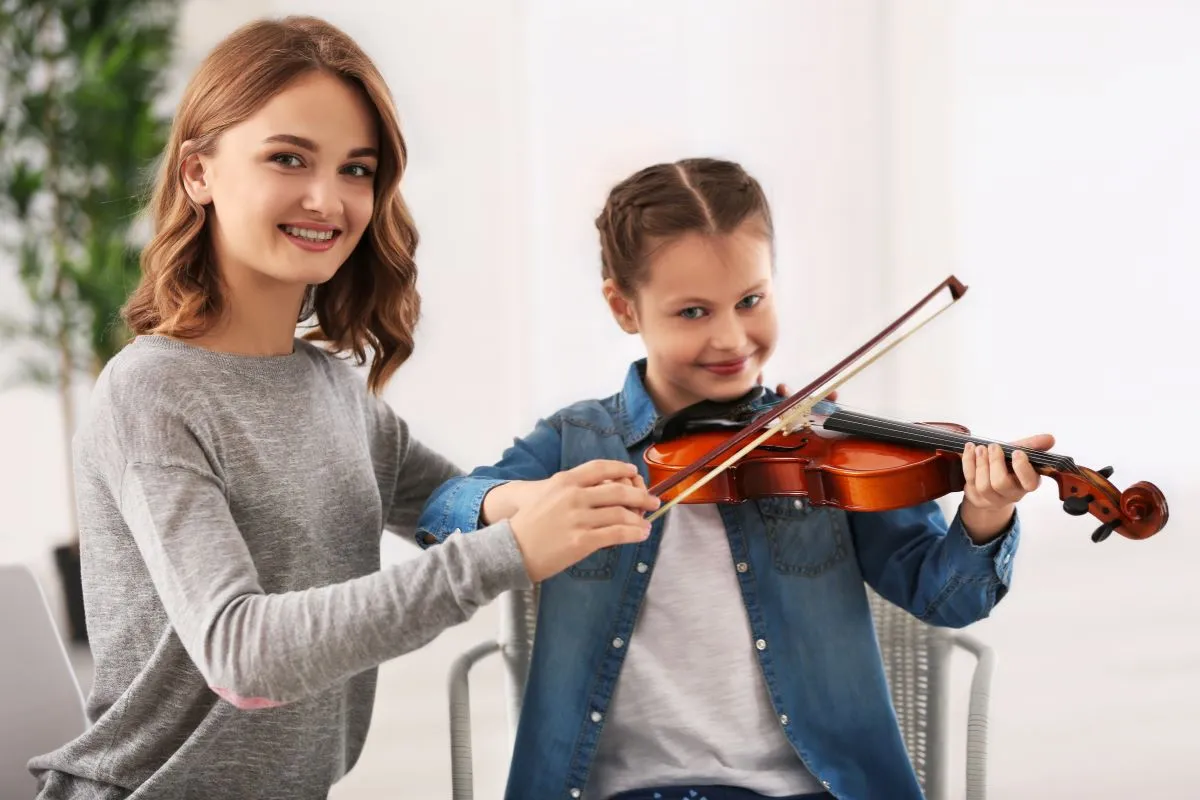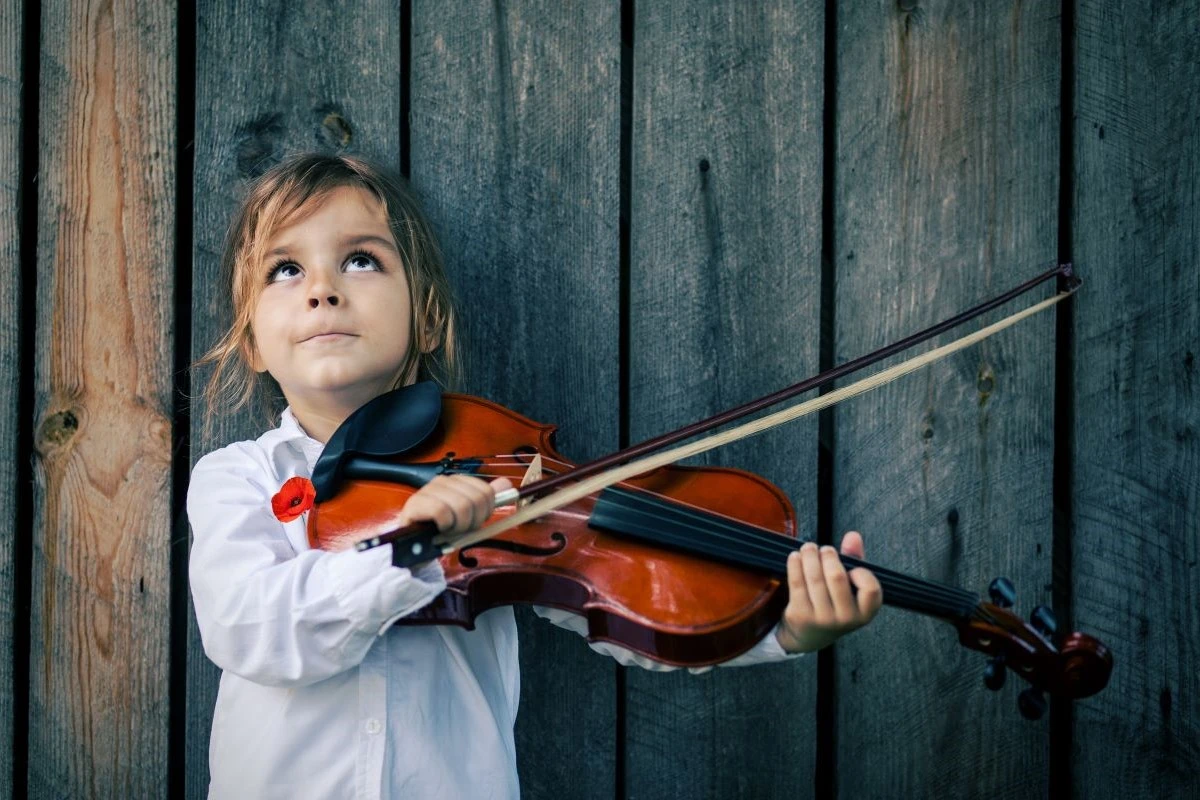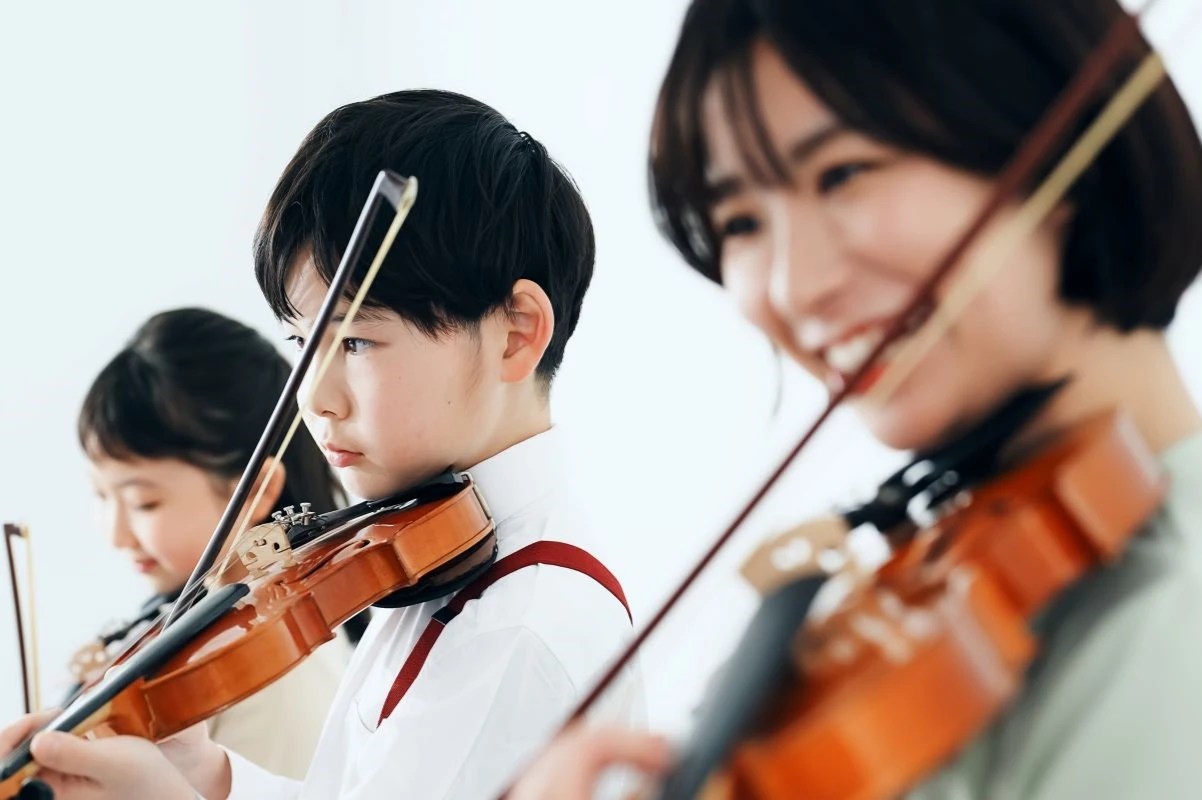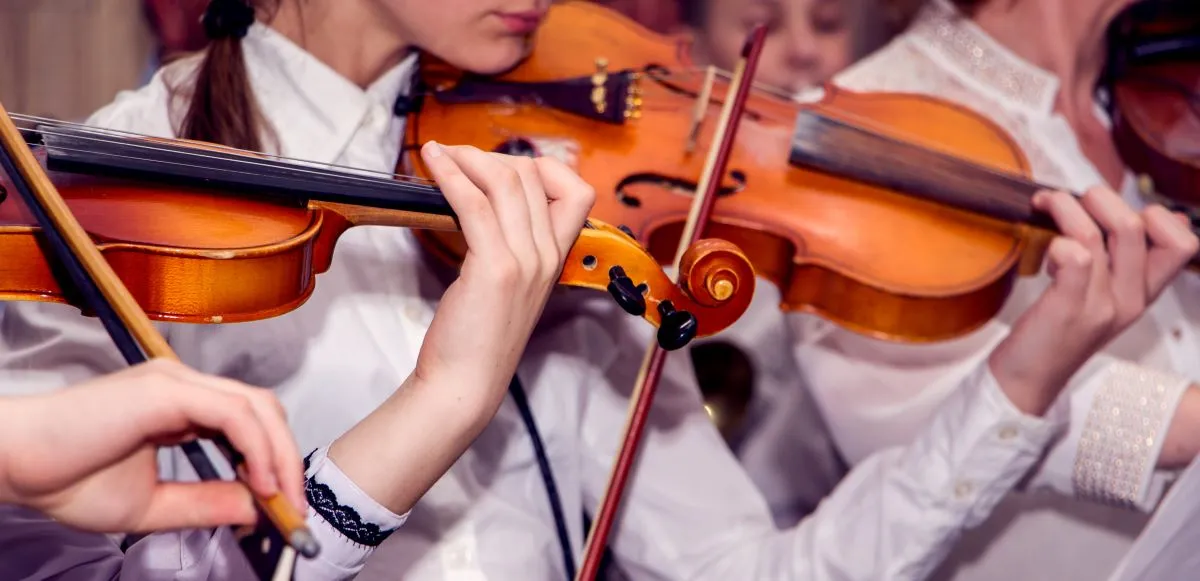
Learning the violin as a beginner is an exciting and enriching process, especially for children.
Beginner violin lessons combine rhythm, melody, creativity and practical exploration to take advantage of children’s natural inclinations for movement, activity and play. Using renowned methodologies like Kodály, Dalcroze and Suzuki, beginner violin lessons provide a well-rounded musical education that improves concentration, self-expression and discipline.
Beginner violin lessons often start with shorter sessions, typically around 30 minutes, especially for younger students. As concentration and skills improve, lessons may extend to 45 minutes or an hour to accommodate more advanced learning.
Violin lessons are taught one-to-one, ensuring personalized attention. This approach allows the teacher to tailor instruction to the student’s pace and learning style, helping them establish a strong foundation in technique and musical understanding.
Weekly lessons are recommended for beginners. This consistency provides regular feedback and structured practice assignments, encouraging steady improvement and helping students build good habits from the start.
A trial lesson is an excellent way for beginners to experience the violin before committing to regular lessons. It gives students the chance to explore the instrument, learn to hold it properly and play a few simple notes in a friendly environment.
Beyond learning to play an instrument, violin lessons instill discipline, patience and concentration in young learners. Through consistent practice, children develop perseverance and problem-solving skills. Music becomes a medium for self-expression, allowing students to convey their emotions and creativity.

For beginners, the first step in violin lessons is to develop a tactile and visual relationship with the instrument. Children learn how to hold the violin and bow correctly, associating positions with notes and sounds. Suzuki’s philosophy encourages early exploration of the violin, taking advantage of children’s developing motor and auditory skills.
Beginners focus on natural and relaxed hand movements, ensuring flexibility and ease in the fingers and wrists. Independence in the fingers and rhythmic control are gradually introduced through simple exercises and short musical phrases. This approach prioritizes comfort and enjoyment, making the learning process smooth and accessible.
Creativity plays a vital role in beginner violin lessons. Through improvisation and short musical games, children develop their imagination and ability to express themselves musically. Improvisation allows students to explore the violin freely, building confidence and creating a deeper connection with the instrument.
In addition, beginner lessons often feature simple, playful pieces that children can perform easily. These pieces introduce musical concepts like phrasing, dynamics and articulation in a way that feels natural and engaging.
TAKE THE FIRST STEP
Rhythm forms the foundation of musical understanding, and beginner violin lessons incorporate it through natural body movement and engaging activities. Inspired by Kodály’s methods, children explore rhythm through clapping, tapping, walking and body percussion. Repeated patterns, ostinatos and simple rhythmic exercises are used to develop a sense of steady pulse, which is essential for playing the violin.
Similarly, Dalcroze’s approach emphasizes the connection between rhythm and physical expression. By integrating movement and gestures, children internalize musical structures in a natural and instinctive way. Activities such as rhythmic games, imitation exercises, and short call-and-response improvisations help develop precision, coordination and memory—all key skills for violin playing.

Teaching violin at beginner level focuses on helping students:
As a beginner violin student, you will learn:

To build a strong foundation and progress as a beginner violin student, it’s important to develop the following skills:
Develop correct positioning of both the violin and bow to play comfortably and avoid stiffness or tension caused by poor posture.
Focus on playing with accurate intonation in the first three positions.
Master essential bowing skills such as détaché (smooth strokes), martelé (sharp, accented strokes), legato (connected strokes), and basic string crossings or bariolage exercises.
Develop the ability to read and play music at first sight, appropriate to your current level.
Beginner violin lessons are much more than an introduction to playing an instrument. By integrating rhythm, creativity and practical skills, these violin lessons create an environment where beginners can flourish. Whether clapping along to rhythms, experimenting with improvisation, or performing in group recitals, beginners build a strong foundation in music while developing skills like discipline, concentration and self-expression.
By focusing on these essential skills, beginner violin students will establish a solid musical foundation and steadily advance in both technique and confidence.
Pick your favorite instrument and start making music today!
MUSIC LESSONSHow to enroll
Categories